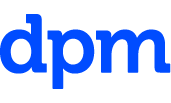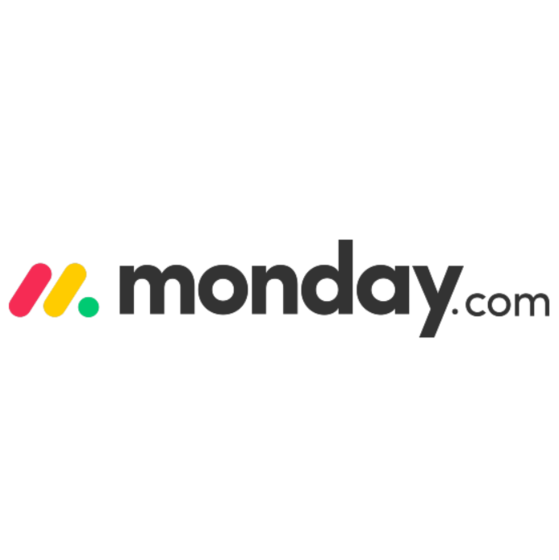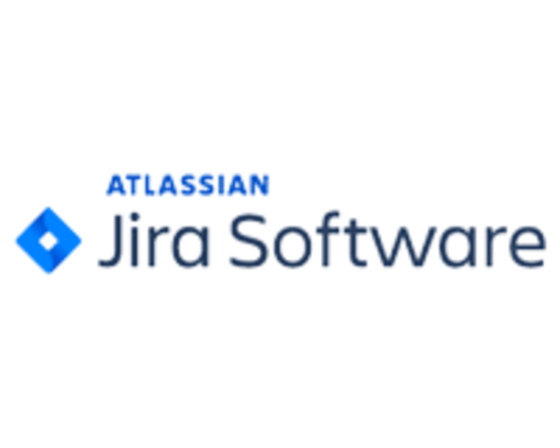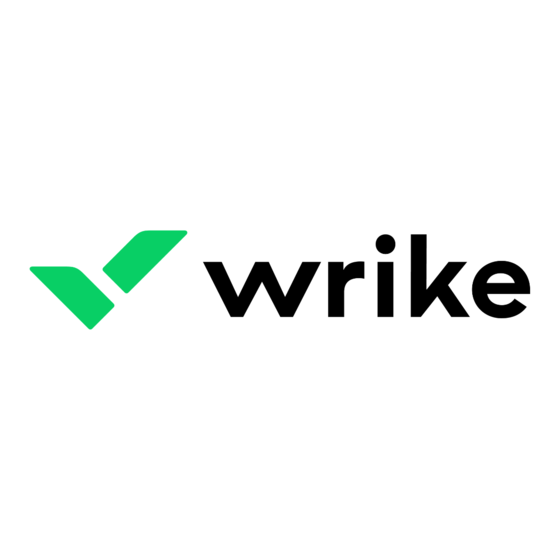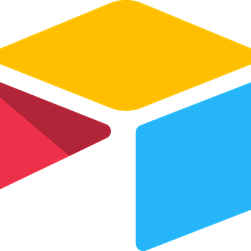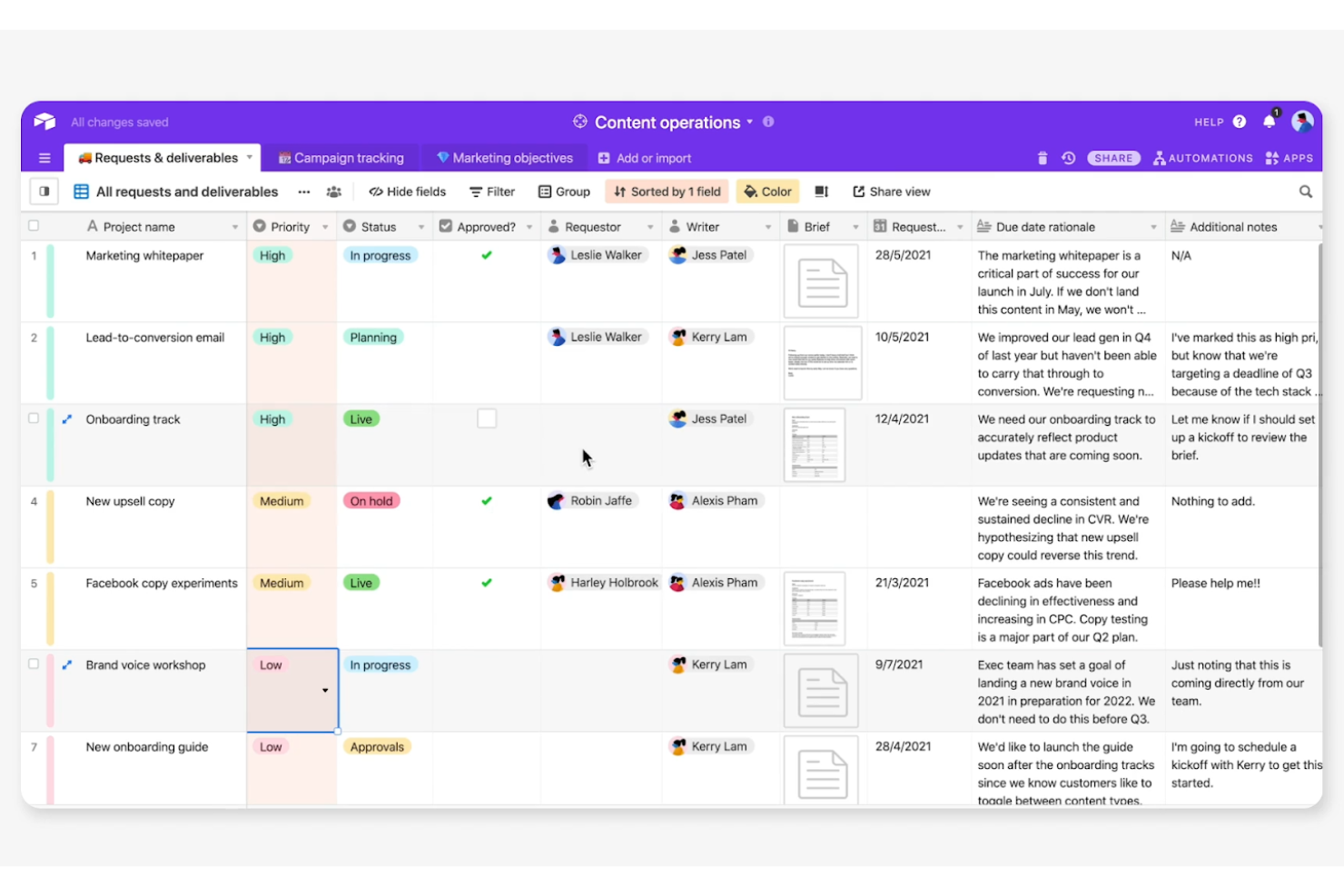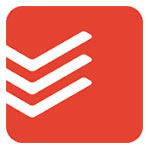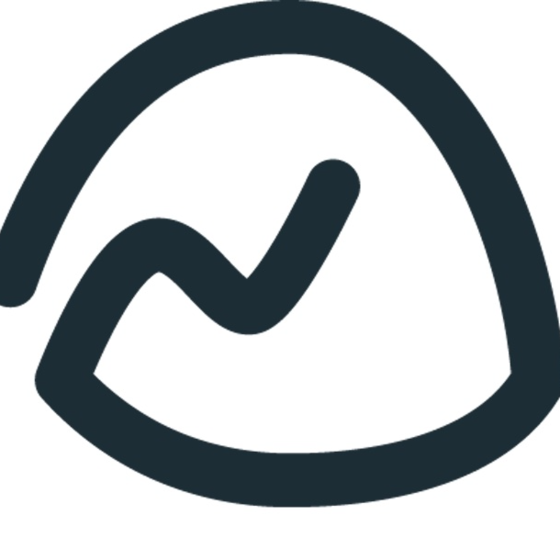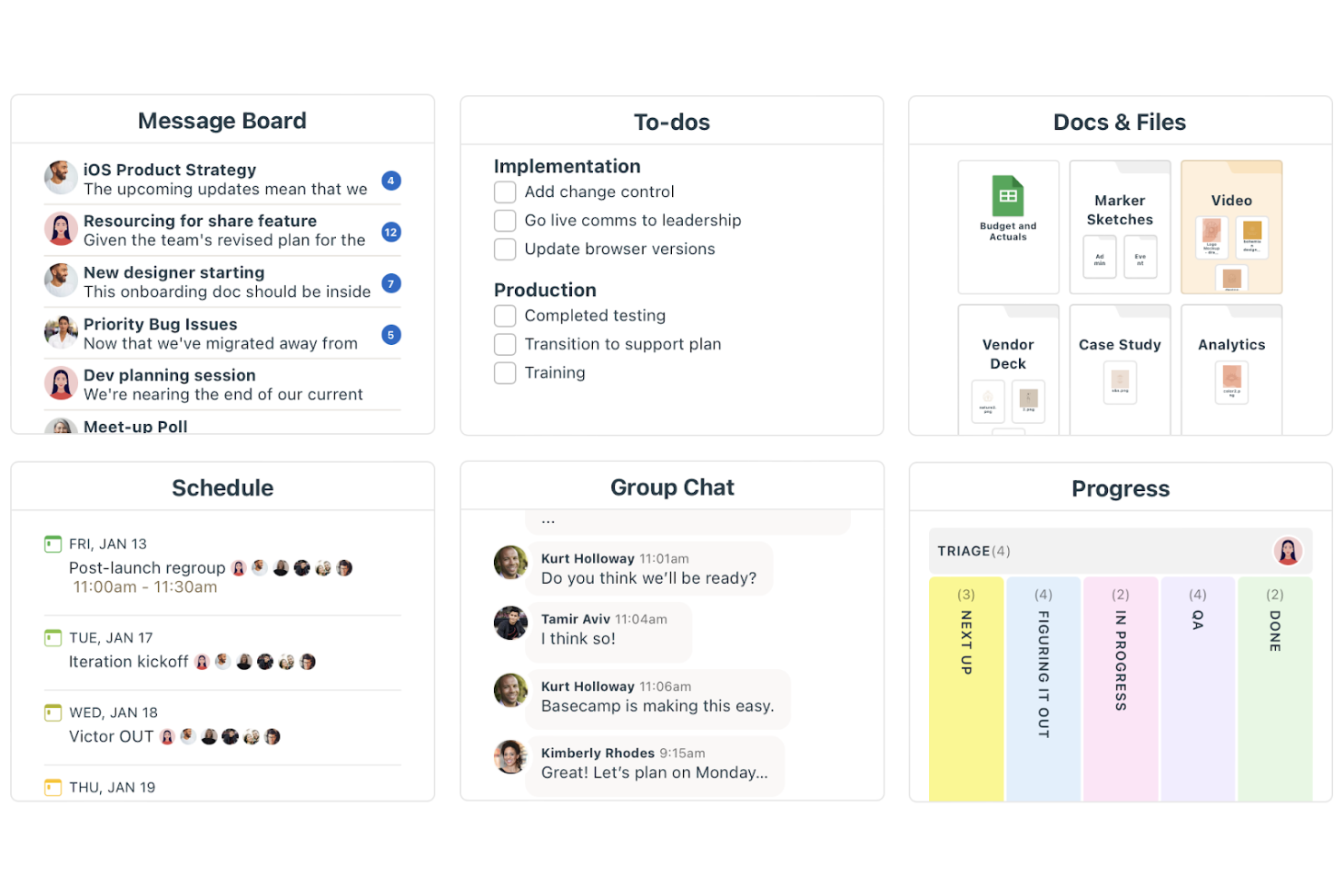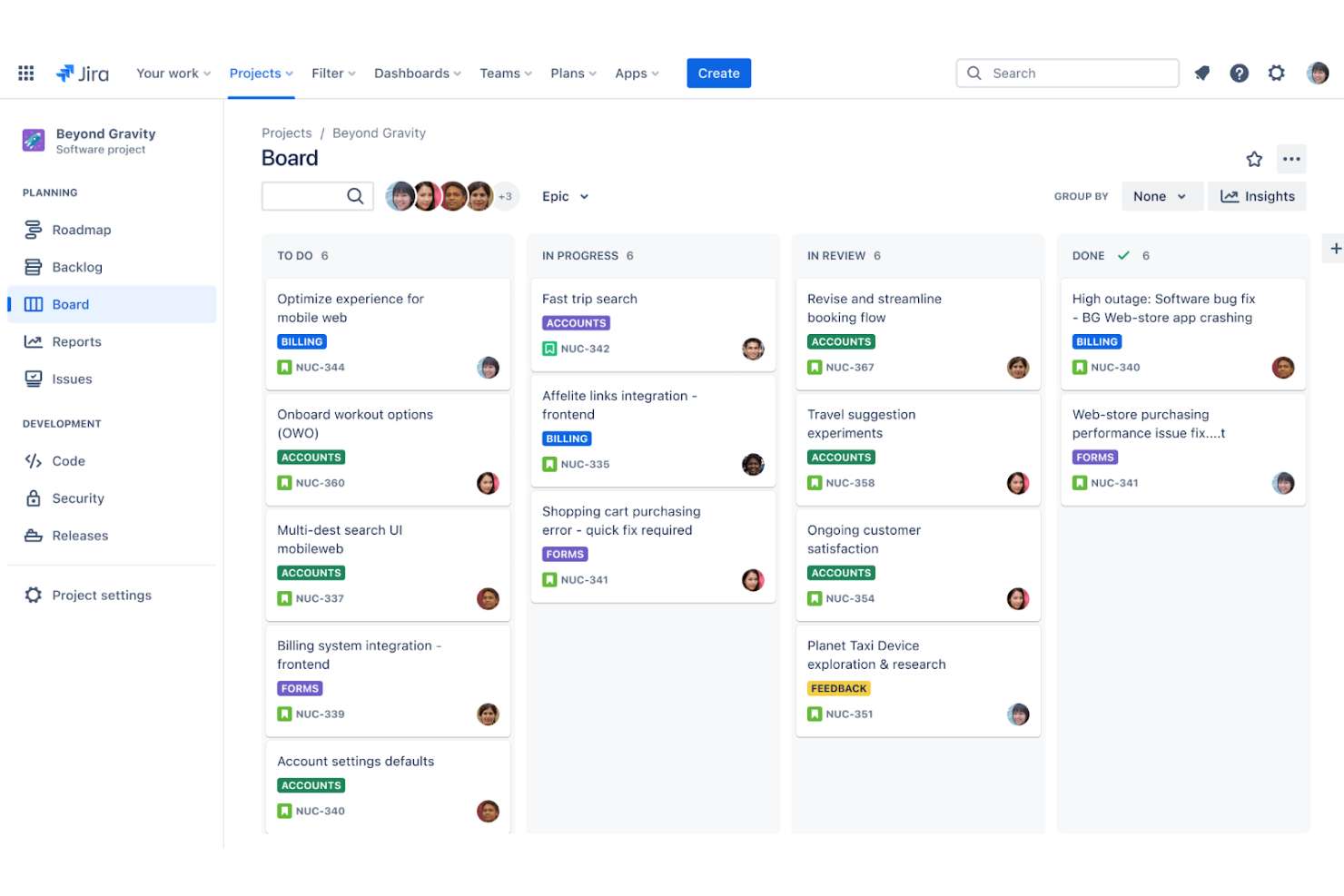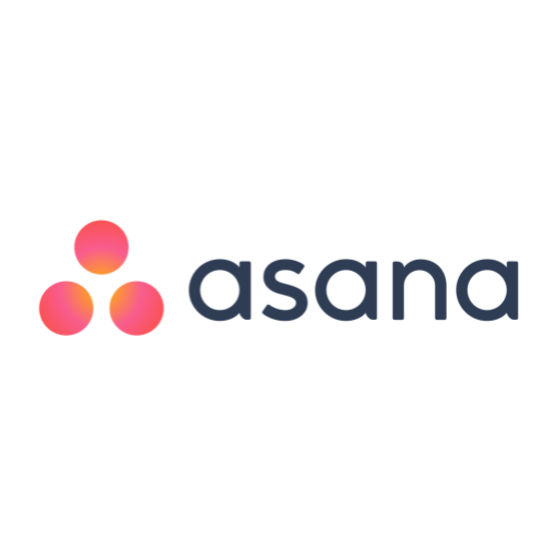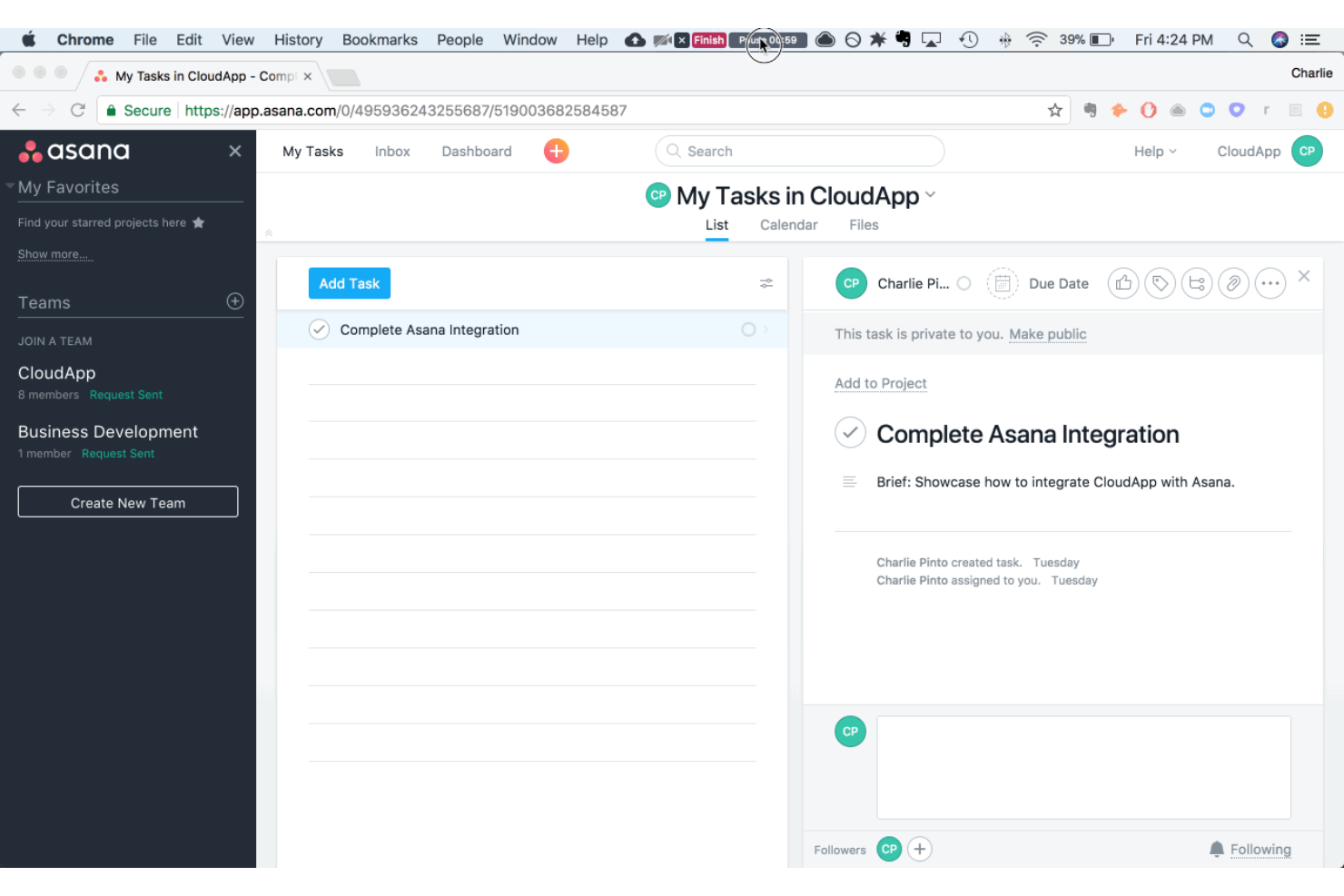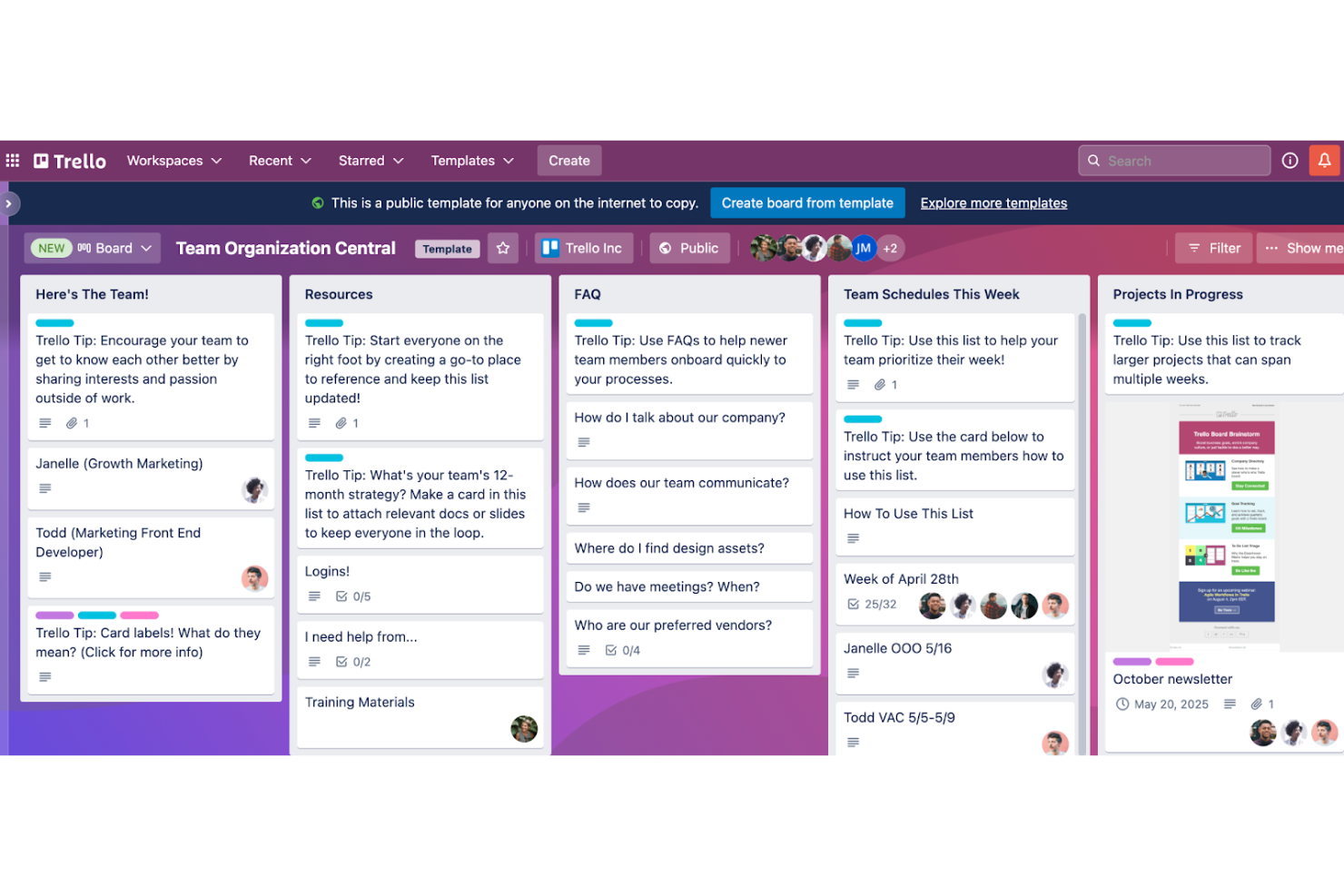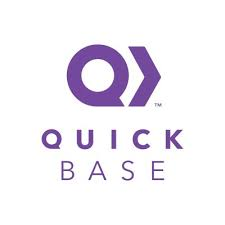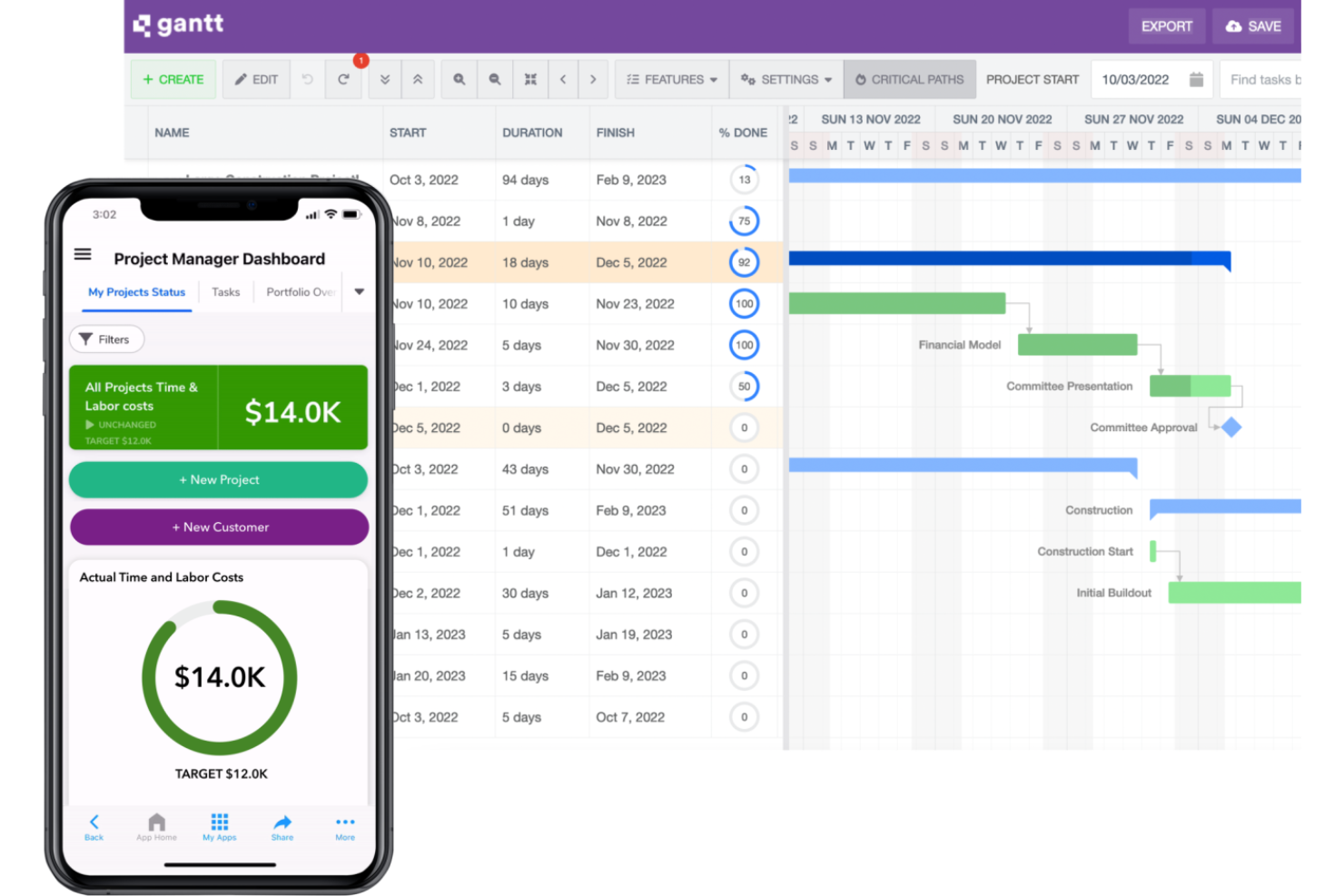10 Best Task Automation Shortlist
Here's my pick of the 10 best software from the 20 tools reviewed.
You're looking to streamline your workflow and increase efficiency, but the challenge lies in selecting the right tool that fits your unique needs. Drawing from my extensive experience in digital project management and my familiarity with many different productivity tools, I've narrowed down the options to present you with the most effective solutions. In this post, I make things simple by leveraging my years of experience to bring you reviews of the best task automation software.
Why Trust Our Task Automation Software Reviews
We’ve been testing and reviewing task automation software since 2012. As project managers ourselves, we know how critical and difficult it is to make the right decision when selecting software.
We invest in deep research to help our audience make better software purchasing decisions. We’ve tested more than 2,000 tools for different project management use cases and written over 1,000 comprehensive software reviews. Learn how we stay transparent & our software review methodology.
How to Choose Task Automation Software
As you work through your own unique software selection process, keep the following points in mind:
- Identify Your Needs: Before diving into the options, it's crucial to understand what tasks you're looking to automate. Are you aiming to streamline email marketing, manage social media posts, or automate data entry? For instance, a real estate company might need automation for client follow-ups, while an e-commerce business may require inventory management automation.
- Ease of Integration: Consider how well the software will integrate with your current systems. Seamless integration is key to avoiding disruption in your workflow. A healthcare provider, for example, would benefit from task automation software that integrates with their patient management system.
- Scalability: Choose software that can grow with your business. If you're a startup, you might start with basic task automation but will need more complex features as you expand. A tech company, for example, may need to scale up its customer service automation as its user base grows.
- User-Friendliness: The software should be easy to use to ensure that your team can adopt it without extensive training. A user-friendly interface is particularly important in industries with high employee turnover, such as retail, where time spent on training is a critical factor.
- Cost-Effectiveness: Evaluate the cost against the benefits. The most expensive option isn't always the best. For example, a small non-profit organization will need to find a balance between functionality and affordability, ensuring they're not paying for unnecessary features.
Each of these considerations addresses specific needs and challenges that different industries and use cases may encounter when selecting task automation software. By carefully evaluating each point, software buyers can make an informed decision that aligns with their operational requirements and strategic goals.
Best Task Automation Software Reviews
These are my comprehensive reviews of leading task automation software, detailing the strengths and weaknesses of each platform. I’ll describe the features and functionalities of each to determine which tool aligns best with your project’s needs.
Wrike is a project management tool designed to assist teams in managing their projects and tasks. It offers a platform that aims to provide 360-degree visibility and control over workflows.
Why I Picked Wrike:
One of Wrike's most notable features is its fully customizable workflow automation that allows teams to set up specific triggers for tasks and projects, automating routine operations and ensuring consistency in task handling. This automation extends to notifications, status updates, and deadline adjustments. Additionally, Wrike provides real-time visibility into project progress and team productivity, which is essential for effective task automation and adjustments to workflows on the fly.
Standout features & integrations:
Features include customizable dashboards, detailed insights into project timelines, workload charts, resource allocation, performance metrics, budgeting, Kanban boards, Gantt charts, approval workflows, and more.
The software integrates with Google Sheets, Google Drive, Google Calendar, Slack, Salesforce, Microsoft Teams, Microsoft SharePoint, Microsoft OneDrive, Adobe Creative Cloud, Miro, Tableau, MediaValet, Zoom, and more.
Pros and cons
Pros:
- Real-time project visibility
- Customizable dashboards
- Automated project workflows
Cons:
- Lack of in-platform chat feature without integrations
- Learning curve for new users
Airtable is a platform that combines the simplicity of a spreadsheet with the complexity of a database. It's best for database-driven projects because it offers a flexible and scalable way to organize data, workflows, and collaboration.
Why I Picked Airtable:
I selected Airtable for its unique ability to offer a spreadsheet-like interface with the power of a relational database. Its customizable views and fields adapt to the specific needs of any database-driven project. I believe Airtable is best for database-driven projects because it provides the tools for teams to create their own workflows and apps, which is invaluable for managing complex projects that are driven by dynamic databases.
Standout features & integrations:
Airtable shines with its rich field types including attachments, links to records in other tables, and formulas. It also offers a variety of views like Grid, Calendar, Kanban, and Gallery to suit different project needs.
Airtable integrates natively with Slack, Box, Dropbox, Google Drive, Gmail, Google Calendar, LinkedIn, Twitter, Facebook, GitHub, Trello, Asana, Jira, Zendesk, and more.
Pros and cons
Pros:
- Real-time collaboration features
- Extensive integration options for a connected workflow
- Customizable fields and views for a personalized database experience
Cons:
- Limited automation and integration runs on lower-tier plans
- Higher cost for advanced features and larger teams
- Steeper learning curve for new users unfamiliar with database concepts
Todoist is a task manager and to-do list application designed to help users organize their work and life. It is best for creating simple to-do lists due to its user-friendly interface and straightforward task management capabilities.
Why I Picked Todoist:
I chose Todoist for the list because it excels in simplifying task management. Its clean interface and focus on to-do lists make it stand out from more complex project management tools. I determined Todoist to be best for simple to-do lists as it allows users to quickly capture tasks and manage them without the clutter of unnecessary features.
Standout features & integrations:
Todoist's standout features include task prioritization, intuitive due dates, and recurring simple tasks. It also offers productivity tracking and collaboration tools.
The software integrates with Google Calendar, Slack, Zapier, Dropbox, Amazon Alexa, Google Assistant, IFTTT, Gmail, Outlook, and Toggl, among others.
Pros and cons
Pros:
- Productivity tracking allows users to monitor their progress
- Recurring tasks ensure regular responsibilities are not forgotten
- Task prioritization helps users focus on important tasks
Cons:
- Collaboration features may not be as extensive as those in dedicated team collaboration tools
- The free version has significant restrictions on tasks and projects
- Advanced project management features are limited
Basecamp streamlines project management and team communication. It's renowned for enhancing remote team collaboration through centralized project tools.
Why I Picked Basecamp:
I selected Basecamp for its holistic approach to managing digital projects, particularly for its user-friendly interface and comprehensive feature set that consolidates various aspects of project management into a single platform. Basecamp is best for remote team collaboration due to its ability to centralize all project-related discussions, tasks, files, and real-time communication, which is crucial for remote teams to function efficiently and stay connected.
Standout features & integrations:
Basecamp's key features include to-do lists, message boards, schedules, documents & file storage, and group chats, all designed to keep teams organized and in sync. It also offers automatic check-ins and hill charts for project tracking.
Basecamp integrates natively with a variety of tools, including Zapier, Unito, Automate.io, Project Buddy, Daypack, Pleexy, Time Doctor, TMetric, Zoho Flow, and Carabiner.
Pros and cons
Pros:
- Intuitive design and user experience
- Comprehensive set of features for project management and team collaboration
- Flat pricing model for unlimited users
Cons:
- Some integrations require third-party services
- Lacks built-in time tracking features
- May not be as customizable as other project management tools
Jira is a project management tool designed for agile software development teams. It excels in facilitating agile practices, making it the best choice for teams that follow these methodologies.
Why I Picked Jira:
I selected Jira for its robust functionality that caters specifically to the needs of agile software teams. Its versatility in supporting different agile frameworks, such as Scrum and Kanban, distinguishes it from other project management tools. I regard Jira as best for agile software teams because it integrates closely with the software development process, offering features that assist in planning, tracking, and releasing software effectively.
Standout features & integrations:
Jira's standout features include its agile boards, customizable workflows, and detailed reporting tools, which are essential for managing complex software projects. It integrates with a wide array of tools, enhancing its utility for software development teams.
Integrations include: Confluence, Bitbucket, GitHub, GitLab, Slack, Trello, Jenkins, Bamboo, Zendesk, Salesforce.
Pros and cons
Pros:
- Multiple deployment options including cloud and on-premises
- Comprehensive reporting for effective project oversight
- Tailored agile boards for Scrum and Kanban
Cons:
- Additional costs for advanced features and bigger teams
- Steep learning curve for newcomers
- Initial setup and customization can be complex
Workato is a robust platform that automates workflows across various applications and systems. It is recognized as the best for workflow automation because it enables seamless connectivity and process automation across the enterprise.
Why I Picked Workato:
I selected Workato for its exceptional ability to automate complex workflows and integrate with a multitude of systems, which is critical for modern enterprises. Its standout feature is the combination of power and simplicity, providing both depth in capabilities and ease of use. I determined Workato to be best for workflow automation due to its extensive integration options and intelligent automation features that support a wide range of business functions and workflows.
Standout features & integrations:
Workato offers a powerful automation designer, real-time data synchronization, and thousands of pre-built connectors, making it easy to automate workflows across applications. It also provides advanced features like recipe IQ, which uses machine learning to suggest the most efficient workflows.
The tool integrates natively with Salesforce, ServiceNow, Slack, Jira, QuickBooks, Zendesk, Marketo, HubSpot, Microsoft Teams, and Gmail.
Pros and cons
Pros:
- Real-time data synchronization
- Advanced automation features with machine learning
- Extensive pre-built connector library
Cons:
- Annual billing may not be flexible for all budgets
- Complexity may be daunting for smaller businesses
- High starting price point
Asana is a digital project management tool designed to improve team collaboration and work management. It excels in team project tracking by providing a clear interface and powerful features to monitor progress and manage tasks effectively.
Why I Picked Asana:
I selected Asana for its robust project tracking capabilities and its popularity among various teams, from small startups to large enterprises. Its user-friendly design and extensive feature set differentiate it from other task automation software. Asana is best for team project tracking because it offers detailed project timelines, task dependencies, and progress tracking, which are essential for maintaining team alignment and meeting project milestones.
Standout features & integrations:
Asana's standout features include task assignments, project timelines, and real-time updates, which are crucial for keeping team projects on track. The platform also boasts a rich set of integrations, enhancing its functionality. It natively integrates with tools such as Slack, Google Calendar, Dropbox, GitHub, Zapier, Microsoft Teams, Adobe Creative Cloud, Salesforce, Tableau, and Jira.
Asana's standout features include task assignments, project timelines, and real-time updates, which are crucial for keeping team projects on track.
The platform also boasts a rich set of integrations, enhancing its functionality. It natively integrates with tools such as Slack, Google Calendar, Dropbox, GitHub, Zapier, Microsoft Teams, Adobe Creative Cloud, Salesforce, Tableau, and Jira.
Pros and cons
Pros:
- Wide range of integrations with other tools
- Extensive project management features
- Intuitive interface for managing and tracking projects
Cons:
- Some advanced features are only available in higher-tier plans
- Enterprise plan requires custom pricing, which can be a barrier for some organizations
- Higher cost for monthly billing compared to annual
Trello is a collaborative tool that organizes projects into boards. It's best for visual task management due to its intuitive and flexible board layout.
Why I Picked Trello:
I selected Trello for its distinctive visual approach to task management, which sets it apart from other productivity tools. I believe Trello is best for visual task management because it enables users to visualize and manage their projects with ease, promoting better organization and tracking.
Standout features & integrations:
Trello's key features include customizable boards, cards, and lists that allow for a high degree of flexibility in managing tasks and projects. It also offers automation with Butler, which reduces the number of tedious tasks.
Trello integrates natively with Slack, Google Drive, Dropbox, Box, Evernote, GitHub, Mailchimp, Salesforce, Zapier, Clockify, and Confluence.
Pros and cons
Pros:
- Comprehensive integration options with other tools and services
- Robust automation with Butler to streamline workflows
- Intuitive visual interface with drag-and-drop functionality
Cons:
- Limited functionality for complex project management needs
- Advanced features and integrations require higher-tier plans
- May become cluttered with extensive use and numerous tasks
Process Street is a powerful tool for managing teams' recurring tasks and procedures. It excels in process management by offering robust tools for creating and tracking standardized workflows.
Why I Picked Process Street:
I selected Process Street for its comprehensive approach to process management, which distinguishes it from other productivity tools. Its focus on standardization, automation, and integration capabilities makes it particularly effective for managing complex processes. I judge Process Street to be best for process management because it streamlines the documentation, automation, and optimization of business processes, which is crucial for maintaining consistency and enhancing productivity.
Standout features & integrations:
Process Street shines with its ability to create detailed process templates, automate mundane tasks with conditional logic, and provide a centralized location for team collaboration. The platform's reporting features also help in monitoring process performance and identifying areas for improvement.
The tool integrates natively with over 1000+ apps including Zapier, which allows for connections with tools like Salesforce, Slack, Microsoft Teams, Google Sheets, Jira, DocuSign, HubSpot, Mailchimp, and many others.
Pros and cons
Pros:
- Robust automation and reporting capabilities
- Extensive integration options through Zapier
- Intuitive user-interface for creating and managing processes
Cons:
- Advanced features may have a steeper learning curve for new users
- Some integrations require a premium Zapier account
- Higher cost for small teams due to per-user pricing
QuickBase is a platform that simplifies custom application development and workflow automation. It excels in custom app development with its flexible design and extensive customization capabilities.
Why I Picked QuickBase:
I selected QuickBase for its standout ability to enable rapid development of custom applications tailored to specific business needs. Its no-code platform democratizes app creation, allowing users without technical backgrounds to build powerful solutions. QuickBase is best for custom app development because it offers a visual application builder and a suite of tools that facilitate the creation of bespoke applications, which can significantly improve business processes and productivity.
Standout features & integrations:
QuickBase's most important features include a no-code application builder, customizable dashboards, automated workflows, and real-time data insights. It also offers robust reporting tools and the ability to integrate with a multitude of other services to enhance functionality.
QuickBase integrates natively with a variety of tools, including Salesforce, NetSuite, Zendesk, QuickBooks, Gmail, Box, Dropbox, Evernote, Google Drive, Slack, Trello, and Jira, among others. These integrations help streamline processes and improve data flow between different systems.
Pros and cons
Pros:
- Customizable dashboards and reports for data analysis
- Wide range of integrations with popular tools
- Intuitive no-code application builder
Cons:
- Advanced features and pricing require direct inquiry
- May be time-consuming to master for those unfamiliar with no-code platforms
- Higher cost for smaller teams due to minimum user requirement
Other Task Automation Software To Consider
Below is a list of additional task automation software that we shortlisted, but did not make it to the top list. Definitely worth checking them out.
- Pipedrive
Best for sales tracking
- monday.com
Good for team collaboration
- ClickUp
Good for custom task views
- Nintex
Good for process mapping
- Smartsheet
Good for spreadsheet-like automation
- IBM Workflow
Good for enterprise scalability
- RoboTask
Good for an on-premise (downloaded) solution
- Decisions
Good for no-code development
- UseMotion
Good for time management
Related Task Management Software Reviews
If you still haven't found what you're looking for here, check out these tools closely related to task management software that we've tested and evaluated.
- Project Management Software
- Resource Management Software
- Workflow Automation Software
- Time Tracking Software
- Collaboration Tools
- Gantt Chart Maker
Task Automation Software Selection Criteria
Selecting task automation software requires a careful analysis of functionality and the ability to meet specific use cases that are crucial for the buyer. In my experience, both through personal trials and extensive research, I've identified key features and criteria that are essential in task automation software.
Core Task Automation Software Functionality (25% of scoring weight)
- Workflow creation and management
- Task assignment and reassignment
- Deadline and milestone tracking
- Automated report generation
- Integration with other business systems
Additional Standout Features (25% of scoring weight)
- Innovative approaches to process automation that streamline complex workflows
- Unique collaboration features that enhance team productivity
- Advanced analytics and data visualization tools for better decision-making
- Customization options that allow the software tools to adapt to various business needs
- Mobile capabilities that provide users with access to tasks and workflows on the go
Usability (10% of scoring weight)
- Intuitive interface design that minimizes the learning curve
- Clear and concise navigation that allows users to find features quickly
- Visual elements like drag-and-drop interface functionality for scheduling
- Responsiveness and performance across different devices and platforms
- Aesthetic appeal that enhances the overall user experience
Onboarding (10% of scoring weight)
- Comprehensive knowledge bases and learning libraries
- Interactive tutorials and product tours that guide new users
- Availability of customizable templates to jumpstart usage
- Support channels like chatbots and webinars for real-time assistance
- Clear documentation on how to migrate existing workflows into the new system
Customer Support (10% of scoring weight)
- Responsive and knowledgeable support teams
- Multiple channels of support including email, phone, and live chat
- Community forums where users can share solutions and best practices
- Service level agreements that guarantee timely assistance
- Regular updates and clear communication about new features and fixes
Value For Money (10% of scoring weight)
- Transparent pricing plans that align with the features offered
- Flexible plans that cater to different sizes and types of businesses
- Free trials or demos that allow for hands-on evaluation before purchase
- Cost-benefit analysis comparing the software's price to its efficiency gains
- Scalability options that accommodate business growth without exorbitant costs
Customer Reviews (10% of scoring weight)
- Consistent positive feedback across multiple review platforms
- Testimonials that highlight the software's impact on business processes
- Critiques that provide constructive insights for potential improvements
- A high number of reviews that indicate a well-established user base
- Patterns in feedback that confirm the software's reliability and effectiveness
Task Automation Software Trends
The landscape of task automation software is evolving at a brisk pace, with new features and functionalities emerging to address the growing complexity of project management and operational efficiency. Here's a look at the current trends in task automation software:
Artificial Intelligence (AI) and Machine Learning (ML)
AI and ML are being integrated into task automation software, enabling systems to learn from data, predict outcomes, and make decisions, which is crucial for project managers dealing with complex data sets and decision-making processes.
Hyperautomation
Hyperautomation combines multiple automation technologies to deliver comprehensive automation solutions, which is essential for project managers aiming to oversee end-to-end processes without the need for constant manual intervention.
No-Code/Low-Code Automation
The rise of no-code/low-code platforms is empowering project managers and other non-technical staff to create and manage automation workflows, thereby democratizing the automation process and accelerating deployment.
Cloud Automation
With a significant portion of enterprise workloads moving to the cloud, automation software is increasingly focused on managing these environments, which is vital for project managers overseeing cloud-based projects.
Container Management
As enterprises adopt cloud-native infrastructure, container management becomes crucial, and IT automation is playing a key role in simplifying these processes for project managers.
DevOps Pipeline Automation
The integration of AI and ML into DevOps pipelines is automating deployment processes, which is particularly beneficial for project managers looking to reduce downtime and streamline release cycles.
Infrastructure as Code (IaC)
IaC is automating the management of infrastructure, which is a boon for project managers who need to ensure scalability and consistency across environments.
ITOps Management
Automation tools are reallocating efforts from ITOps management to continuous engineering, which aligns with the project manager's goal of optimizing operational tasks.
Security Automation
In light of increasing cyber threats, security automation is becoming a critical feature in task automation software, which is crucial for project managers responsible for safeguarding project data..
Workload Automation and Intelligent Job Scheduling
The adoption of workload automation is on the rise, with project managers recognizing its value in driving digital transformation and improving task scheduling.
The trends in task automation software are clearly leaning towards AI and ML integration, hyper-automation, and no-code/low-code platforms, which are rapidly evolving to meet the needs of project managers.
What Is Task Automation Software?
Task automation software is a digital tool designed to automate repetitive and routine tasks. It is used by businesses and individuals to increase efficiency, reduce errors, and save time. The software serves various users, from IT professionals automating system operations to marketers streamlining campaign tasks. It eliminates the need for manual input in routine tasks, allowing users to focus on more strategic work.
Task automation software comprises components such as triggers, actions, conditions, and workflows. Triggers initiate a sequence of actions based on specific conditions or events. Actions are the tasks performed automatically, while conditions determine when and how actions are executed. Workflows are the comprehensive processes that connect multiple actions and conditions to achieve complex task automation.
Features Of Task Automation Software
When selecting task automation software, it's essential to consider features that not only streamline operations but also support complex workflows and integrate seamlessly with other tools.
- Workflow Automation: This feature allows for the creation of multi-step processes that can operate without manual intervention. Workflow automation is vital as it ensures tasks are completed consistently and frees up time for team members to focus on more valuable work.
- Task Scheduling: With task scheduling, users can set tasks to be triggered at specific times. This feature is important for maintaining consistency in task execution and ensuring that time-sensitive tasks are completed when required.
- Process Mapping: This allows users to visualize workflows and understand the sequence of tasks. Process mapping is crucial for identifying bottlenecks and optimizing the flow of tasks to improve efficiency.
- Integration Capabilities: The ability to integrate with other software systems ensures that task automation software can work in harmony with existing tools. Integration capabilities are important for creating a cohesive technology ecosystem that maximizes productivity.
- Customization Options: Customization options enable the software to be tailored to the specific needs of a business. This feature is important because it allows for flexibility and adaptability as business processes evolve.
- Reporting and Analytics: This feature provides insights into the performance of automated tasks. Reporting and analytics are important for measuring the success of automation and making data-driven decisions to enhance business processes.
- Notification and Alerts: Notifications and alerts keep users informed about the status of automated tasks. This feature is important for ensuring that any issues are promptly addressed and that there is accountability in task completion.
- User Access Control: User access control allows for the management of permissions and ensures that only authorized individuals can make changes to automated tasks. This feature is important for maintaining security and control over business processes.
- Error Handling: The ability to manage and respond to errors in automated tasks is essential. Error handling is important for minimizing downtime and ensuring that processes can recover quickly from disruptions.
- Scalability: Scalability ensures that the software can handle an increasing number of tasks as the business grows. This feature is important for ensuring that the software remains effective and efficient over time.
By prioritizing these features, businesses can ensure they choose a solution that not only meets their current needs but also supports their growth and adapts to future challenges.
Benefits Of Task Automation Software
Task automation software has become a cornerstone for enhancing productivity and efficiency in both personal and organizational workflows. Here are five primary benefits that task automation software offers:
- Increased Productivity: Automation software executes tasks faster and more consistently than humans. This allows users to accomplish more in less time, significantly boosting productivity levels.
- Error Reduction: By minimizing human intervention, task automation software reduces the likelihood of errors. Consistent and accurate task execution ensures higher quality outcomes and reliability in processes.
- Cost Savings: Automating tasks can lead to significant cost reductions by lowering the need for manual labor and reducing the potential for costly errors. This can result in a more efficient allocation of resources and increased profitability.
- Improved Workflow Management: Task automation software provides tools for better scheduling, tracking, and coordination of tasks. This leads to smoother workflows and the ability to manage complex projects with ease.
- Enhanced Customer Experience: Automated tasks often result in quicker response times and more personalized interactions. This can improve customer satisfaction and loyalty, as clients benefit from efficient and tailored services.
By leveraging the power of automation, businesses can not only streamline their operations but also gain a competitive edge in the marketplace.
Costs And Pricing Of Task Automation Software
Task automation software is a critical tool for enhancing productivity and streamlining business processes. It allows users to automate repetitive tasks, which can save time and reduce errors. For software buyers who are new to this technology, understanding the various plan options and their pricing is essential for making an informed decision that aligns with their business needs and budget.
Task Automation Software Cost and Pricing Table
| Plan Type | Average Price | Common Features |
| Free | $0 | Basic task automation, limited number of tasks or workflows, community support, access to fundamental integrations |
| Basic | $10 - $20/user/month | Enhanced task automation capabilities, increased number of tasks or workflows, email support, additional integrations |
| Pro | $30 - $50/user/month | Advanced automation features, priority support, unlimited tasks or workflows, premium integrations, analytics and reporting tools |
| Enterprise | Custom pricing | Custom automation solutions, dedicated support, enterprise-grade security, scalability options, personalized onboarding and training |
When considering which plan to choose, software buyers should assess the complexity of the tasks they need to automate and the scale at which they require the software to operate. It's also important to consider the level of support and the security features that are necessary for their organization.
Task Automation Software FAQs
How does task automation software improve productivity?
Task automation software improves productivity by handling routine tasks that would otherwise consume valuable time and resources. By automating these tasks, employees can focus on more strategic work that requires critical thinking and creativity. Additionally, automation can ensure tasks are completed consistently and on schedule, which can improve overall operational efficiency.
Can task automation software integrate with other tools?
Yes, many task automation software solutions offer integration capabilities with a wide range of other tools and platforms. This can include email clients, customer relationship management (CRM) systems, content management systems (CMS), and more. Integration allows for seamless workflows and data synchronization across different applications, which can further enhance productivity and reduce the need for manual data entry.
Is task automation software suitable for small businesses?
Task automation software is not only suitable for small businesses but can be particularly beneficial. Small businesses often have limited resources and staff, so automating routine tasks can help to maximize efficiency and ensure that employees can focus on core business activities. Many task automation tools are scalable and offer flexible pricing models to accommodate the needs of smaller operations.
What are some examples of tasks that can be automated?
Tasks that can be automated include data entry, appointment scheduling, email responses, social media posting, invoice generation, and customer support ticketing. Virtually any task that follows a predictable pattern or set of rules can be a candidate for automation.
Are there any security concerns with task automation software?
As with any software that handles business data, there are security concerns with task automation software. It is important to choose a solution that offers robust security features, such as encryption, user authentication, and access controls. Additionally, ensuring that the software is regularly updated and following best practices for data security can help mitigate potential risks.
What should I consider when choosing task automation software?
When choosing task automation software, consider factors such as ease of use, customization options, integration capabilities, scalability, customer support, and pricing. It’s also important to evaluate the specific needs of your business and select a tool that aligns with your workflow and objectives.
Can task automation software be used by teams?
Yes, task automation software is often designed with collaboration in mind and can be used by teams to coordinate tasks and workflows. Features such as shared calendars, task assignments, and progress tracking can help teams stay organized and ensure that everyone is aware of their responsibilities and deadlines.
What Next?
Subscribe to the DPM newsletter to get regular updates when we publish fresh how-to guides and articles on digital project management topics.
